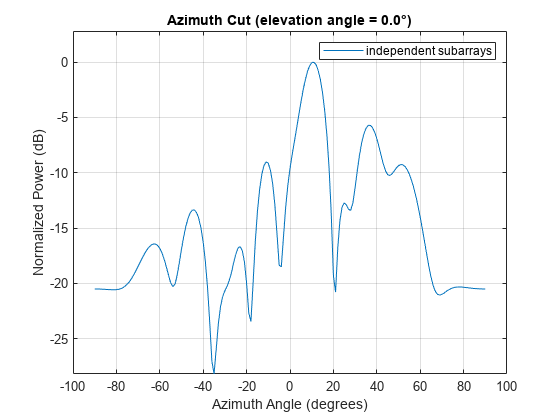step
Output responses of subarrays
Description
Note
The object performs an initialization the first time the object is executed. This
initialization locks nontunable properties
and input specifications, such as dimensions, complexity, and data type of the input data.
If you change a nontunable property or an input specification, the System object™ issues an error. To change nontunable properties or inputs, you must first
call the release method to unlock the object.
Examples
Input Arguments
Output Arguments
Version History
Introduced in R2012a

